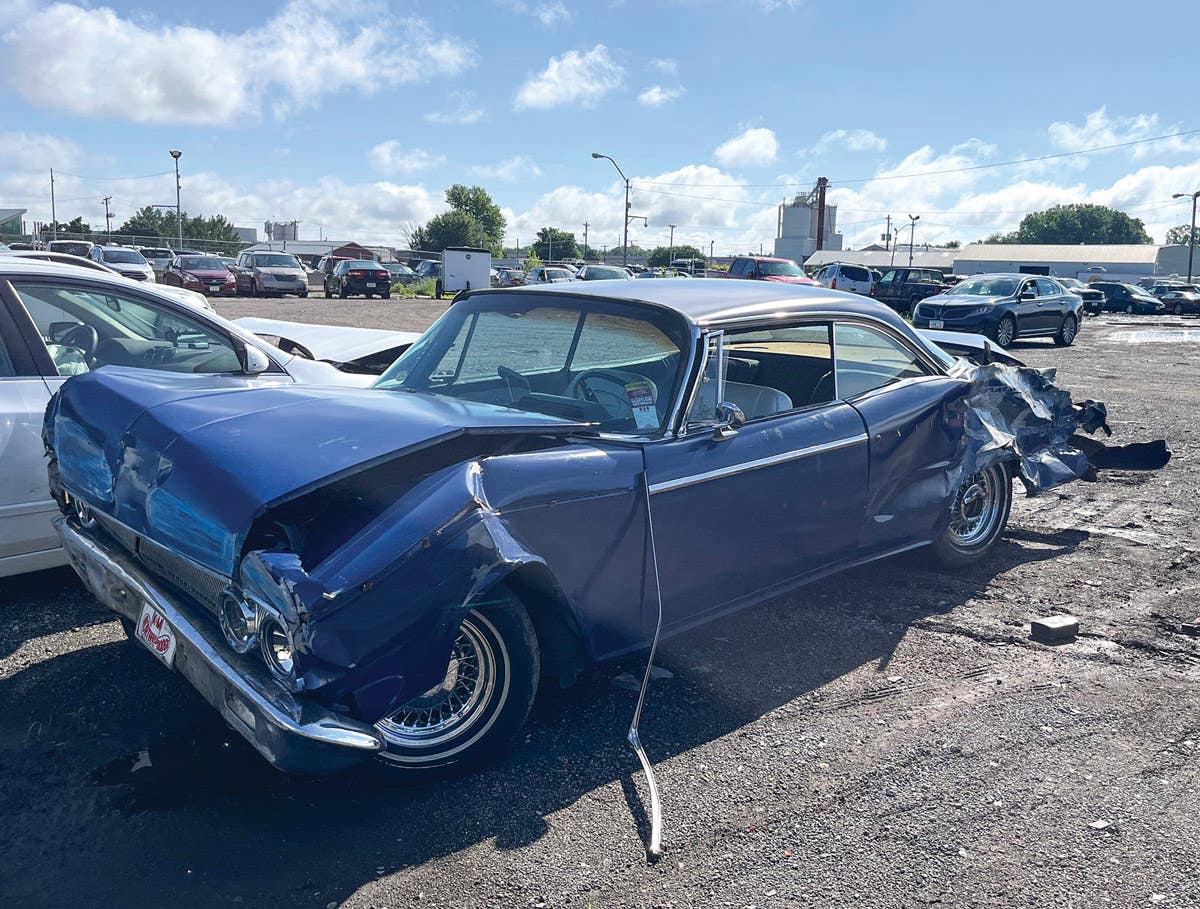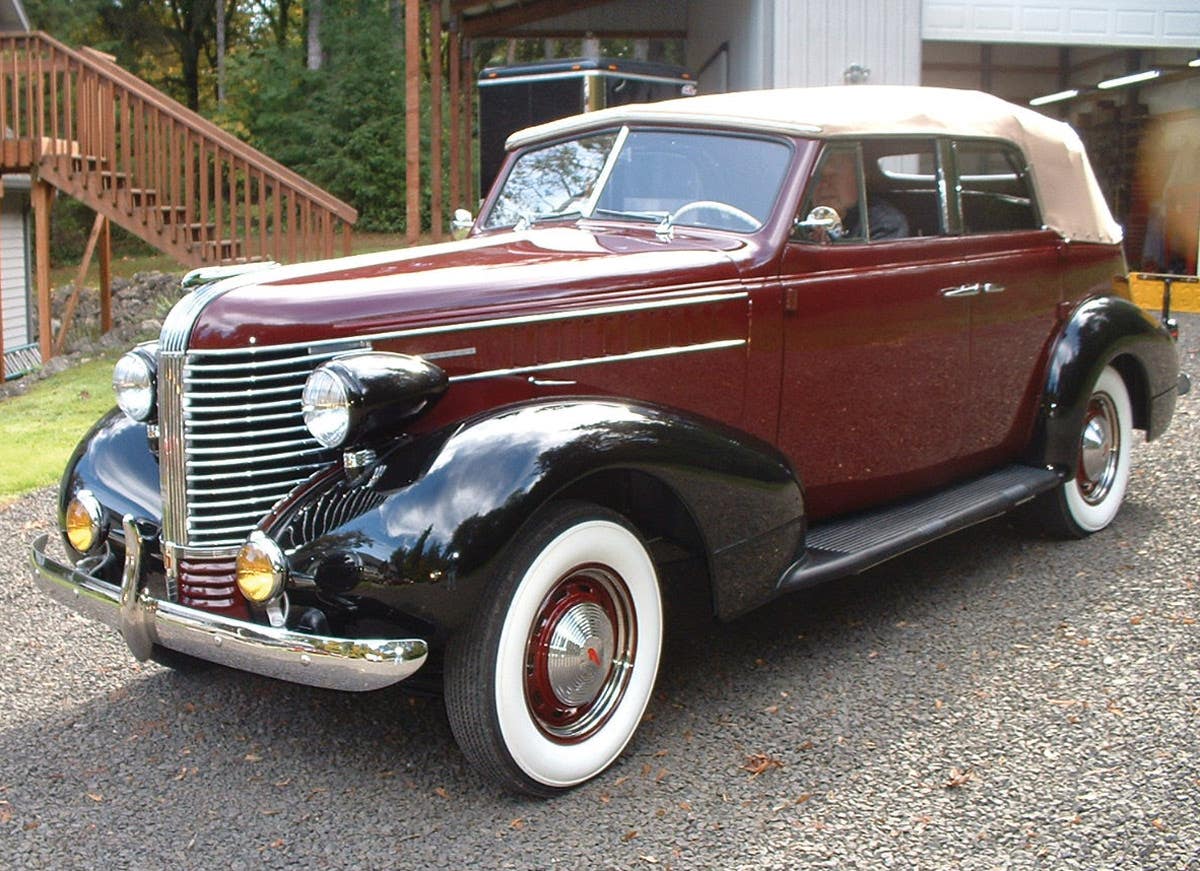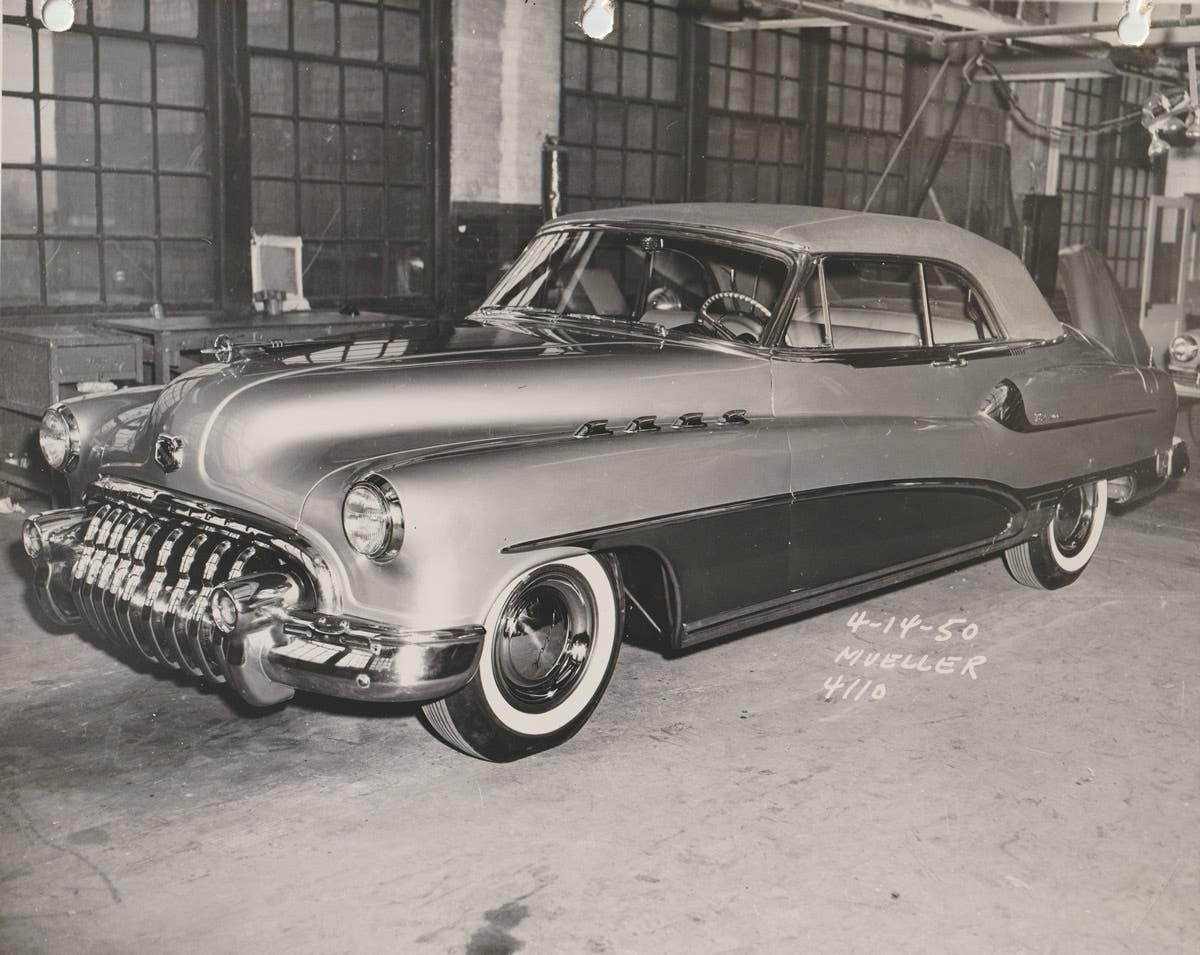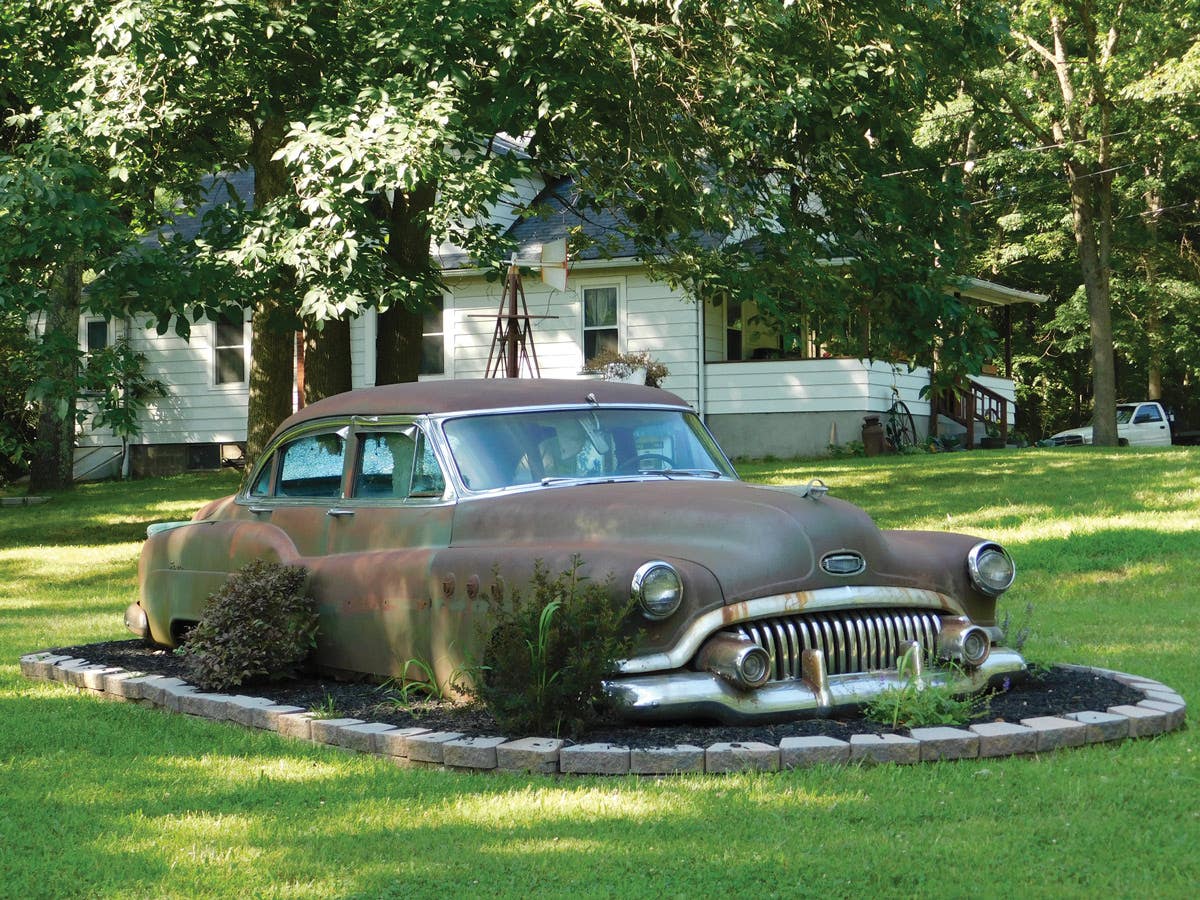Car of the Week: 1925 Packard Holbrook coupe
A few Packards intended for the American market in the 1920s were actually shipped to far away shores, and at least one particularly special 1925 Packard went as far as “Down Under.”
By Angelo Van Bogart
Perhaps even more than the two other “P’s” — Pierce-Arrow and Peerless — Packard quality was renowned around the world before, after and during the Roaring 1920s. Although Packard’s greatest clientele came from the United States, many cars were shipped by the factory to other shores, where overseas customers enjoyed Packard’s high level of service. A few Packards intended for the American market were even shipped to far away shores, and at least one particularly special 1920s Packard went as far as “Down Under.”
“I think this is one of the more significant Packard cars to come to Australia given its ownership and especially being a Holbrook-bodied coupe,” says Australian Trevor Griffiths, whose daughter, Alison Griffiths, now owns the 1925 Packard featured here. “I see some Packard coupes for sale described as ‘Holbrook coupes,’ but they are quickly dismissed by the windscreen and the fact the doors are hinged at the front and not the rear.”
The original owner of this Holbrook-bodied Packard coupe was as famous in Australia as the Packard name. According to Griffiths, Mr. Frank Albert worked for Boomerang Mouth Organs and traveled to New York in 1925 to source the latest music for his company. While in the empire state, Albert attended the New York Salon and apparently became smitten enough with the Holbrook coupe to purchase it off the floor. Since the Packard was intended for the U.S. market, it had to be converted to right-hand drive by the factory, after which it was shipped to Sydney on the RMS Niagara.
“As far as I know, it was imported in late 1925, early 1926,” Griffiths said. “Mr. Albert, who bought the coupe new ‘off the floor’ at the Commodore Hotel Salon Show in New York, was one of Australia’s most wealthy, and owned Boomerang Mansion, the most photographed home in Australia.”
Albert’s choice of a Packard with an aluminum body from Holbrook Co. was solid. By this time, Packard was one of the oldest American car manufacturers still in operation, having been founded in 1899 in Warren, Ohio, with production of one-, two- and four-cylinder motorcars in its earliest days. The company moved to Detroit in 1903 and built exclusively four-cylinders until 1912, when a six-cylinder joined the line. In 1913, the company exclusively built sixes, then doubled the cylinders for the 12-cylinder Twin Six for 1916. Packard’s sole powerplant was the powerful and smooth Twin Six until 1921, when another six-cylinder, labeled the Single Six, was added to the line as a more economic alternative to the Twin Six, both in production cost and retail price.
With the success of the Single Six, Packard worked to replace the Twin Six with a less-costly-to-produce replacement, and that came with the marque’s first eight-cylinder, unveiled for 1924 after the Twin Six was phased out in 1923. Eight-cylinder engines would become a mainstay at Packard until the company’s final days.
With the introduction of the Packard Single Eight also came the company’s first use of four-wheel brakes. The 1924 L-head eight was cast enbloc with a bore and stroke of 3-3/4 x 5 inches and a displacement of 357.8 cubic inches. The compression ratio of 4.51:1 helped the nine-main-bearing engine produce 85 bhp at 3,000 rpm.
When Packard introduced its 1925 Eight models on Feb. 2, 1925, the company dropped the “Single” designation used in 1924, but kept the engine itself unchanged for 1925. The company also added Bijur chassis lubrication and made balloon tires and disc wheels standard. Upon the introduction of its 1925 Second Series Eight models, Packard made the Holbrook coupe the first custom body to be cataloged on the 136-inch-wheelbase chassis. The cataloged two-passenger Holbrook coupe was base-priced at $5,775 — a full $1,225 more than the standard $4,550 four-passenger coupe, which could seat twice as many passengers.
By 1925, Holbrook was well established in its own right. Having been founded in 1908 by Harry F. Holbrook and John (Jack) Graham using capital from Manhattan businessmen, the company set up shop on the middle class-inhabited west side of that New York City borough. The first Holbrook bodies are said to have been built on Simplex chassis before the company began to build bodies for other quality chassis, such as Cadillac, Isotta-Fraschini, Locomobile, Pierce-Arrow, Rolls-Royce and, of course, Packard.
Some of Holbrook’s early bodies were sporting, open models, but after the company moved to Hudson, N.Y., in 1920, it became more associated with closed coachwork. At the time of its move to the Hudson facility, Holbrook employed 80 skilled workers full time — Monday through Friday and a half-day Saturday — many of whom moved with the company from Manhattan. One newspaper account noted about a dozen Packard chassis and examples of Pierce-Arrow, Lincoln and Locomobile awaiting coachwork during its 1921 visit to the new factory. By 1922, the new Holbrook factory had doubled in size, allowing it to build as many as 700 bodies per year.
The number of bodies Holbrook built in 1925 is not known, but it’s believed more than 100 coupe bodies were built for Packard that year. Holbrook had been building coupe coachwork for Packard since at least 1923, and in 1925, is believed to have built two versions for the Packard Series 236. In addition to the aforementioned catalog version priced at $5,775, a full custom version was also available with a folding top and/or rumble seat. The full custom could also be fitted with an interior of the customer’s choice and special seats and/or colors. Both featured the hallmark Brewster-style windshield with two angled glass panes and a visor to reduce glare, as well as landau irons on the roof, as on Alison Griffith’s Style No. 281 Holbrook coupe.
Of the approximately 100 Holbrook coupe bodies built for 1925, there are only two known survivors.
“We do not know how many Holbrook coupes were built, but the ‘Boomerang Coupe,’ we believe, has only one sibling, and that is a left-hand-drive 1925 or 1926 Holbrook coupe in Switzerland,” Trevor Griffiths said.
“We call it the ‘Boomerang Coupe’ as it was owned by Mr. Frank Albert, who owned ‘Boomerang Mansion’ in Sydney, named after his Boomerang Mouth Organ Company. He also owned a yacht which was called ‘Boomerang.’”
How Griffiths’ “Boomerang Coupe” flew off the estate of the Boomerang Mansion is unknown, but in 1972, the car was found on a New South Wales farm by collector and restorer Neville Fisher of Blacktown, Sydney. Fisher restored several Packards and owned eight, including the “Boomerang Coupe,” which he sold in the early 1970s to Alison Griffiths’ grandfather, along with a 1930 Packard Eight drop-head coupe and a 1927 Cadillac sports phaeton. The 1925 Packard Holbrook coupe has since passed to Alison Griffiths, who has undertaken work with her father to make the Packard the drivable beauty it is today.
“When purchased, the bodywork had been completed by Neville Fisher, and over the past five years, the straight-eight engine has been totally rebuilt, covering only 130 miles since completion,” Trevor Griffiths said.
“In restoring the motor, the crankcase on the Packard is aluminium and [they] are always prone to weeping out oil,” Griffiths said. “The motor mechanic who started the re-build placed the crankcase on his barbecue with appropriate caution and heated out the old oil then coated the inside and outside of the crankcase with an epoxy marine paint to seal both inside and outside. Good, old Aussie ingenuity!”
Now, the Packard is a reliable performer and is ready to wow passersby from the left side of the road.
“The car has plenty of power to keep up with the traffic,” Griffiths said, “but must be driven according to its age — carefully!”
Got a car you’d like us to feature as our “Car of the Week“? We want to hear from you! E-mail us and tell us all about it.
____________







